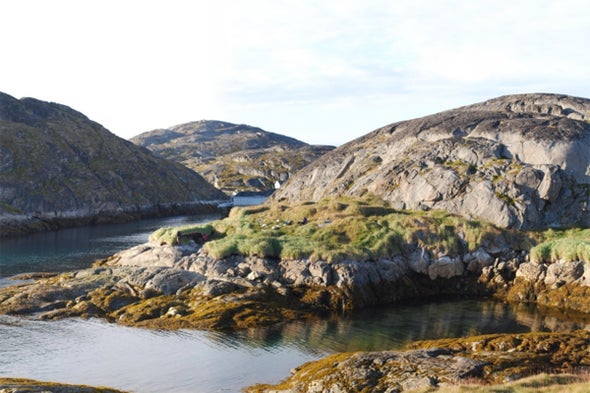One of the archaeological sites included in the study is located at Kangeq in the archipelago outside of Nuuk in West Greenland. Credit: Jørgen Hollesen National Museum of Denmark
Lining the fjords of Greenland are remnants of Viking-era Norse outposts that flourished for less than 500 years before they were mysteriously abandoned. And now this lost culture is experiencing a second disappearance, triggered by climate change.
Of all the archaeological sites in Greenland, Norse settlements are at the most risk of rotting away as the Arctic warms, according to new research published Thursday in Scientific Reports. The study estimates that up to 70 percent of the organic material in these sites could decay by 2100.
What stands to be lost is a unique record of remarkably preserved material: hair, textiles, human and animal bones, woods, hides, leathers. As the soil warms up and the number of frost-free days increases, microbes attack these fragile organics, leaving only rot behind. The changes are already happening near Greenland’s capital city of Nuuk, says lead study author Jørgen Hollesen, a senior researcher at the National Museum of Denmark. “Here we have some sites where we know that they found a lot of artifacts, a lot of bones, 40 years ago—but today we don’t see that much left,” he says. “There were bones at some point, but now it’s just this fine-grained mush.”
Read the rest of the article

No comments:
Post a Comment